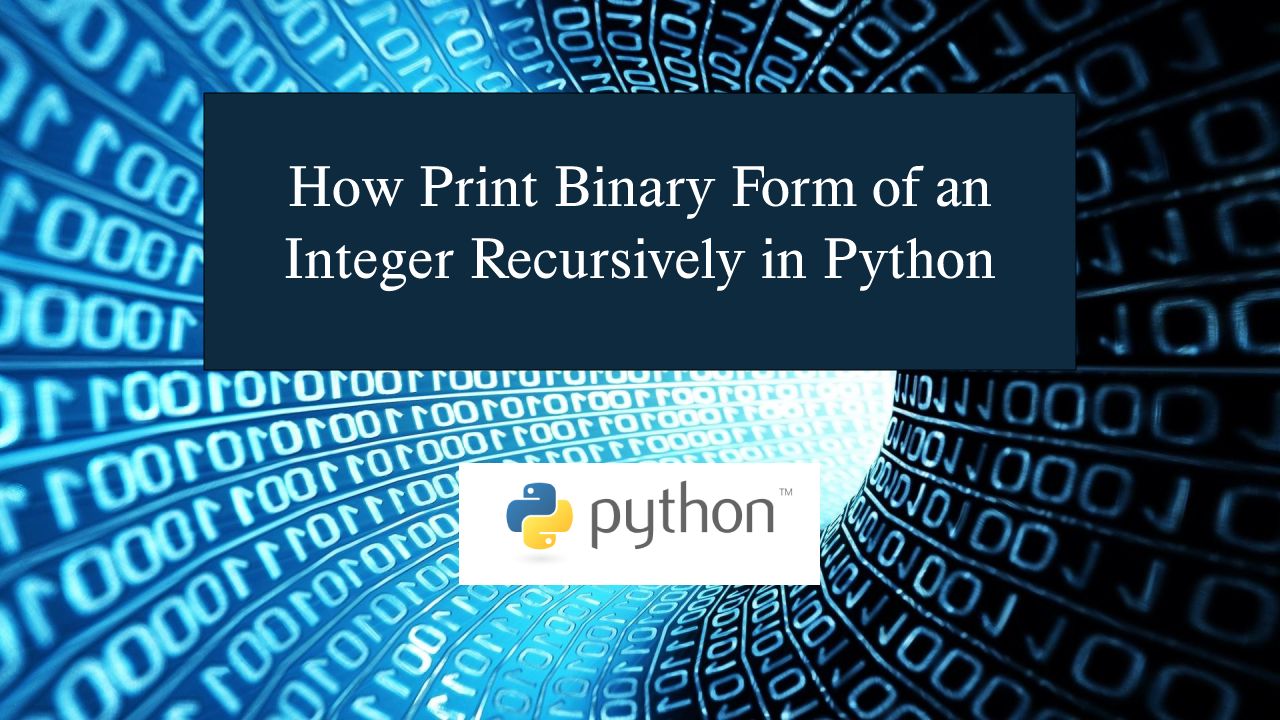How Print Binary Form of an Integer Recursively in Python
In this tutorial, we will learn how to program "How to Print the Binary Form of an Integer Recursively in Python." The objective is to accurately display the binary representation of an integer. This tutorial will guide you step by step through the entire process of converting an integer into its binary form. By the end of this tutorial, you will have a solid understanding of how to implement this task in Python, helping you strengthen your problem-solving abilities and enhance your coding skills.
This topic is straightforward to understand. Just follow the instructions provided, and you will be able to complete it with ease. The program will guide you step by step through the process of generating a number table. So, let’s dive into the coding process!
Getting Started:
First you will have to download & install the Python IDLE's, here's the link for the Integrated Development And Learning Environment for Python https://www.python.org/downloads/.
Creating Main Function
This is the main function of the application. The following code will display a simple GUI in terminal console that will display program. To do this, simply copy and paste these blocks of code into the IDLE text editor.- def convert(b, l=None):
- if l is None:
- l = []
- if b == 0:
- return l
- dig = b % 2
- l.append(dig)
- return convert(b // 2, l)
- while True:
- print("\n=============== Print Binary Form of an Integer Recursively ===============\n")
- try:
- a = int(input("Enter a number: "))
- if a == 0:
- print("Binary equivalent:\n0")
- else:
- binary_list = convert(a)
- binary_list.reverse()
- print("Binary equivalent:")
- for bit in binary_list:
- print(bit, end='')
- print()
- except ValueError:
- print("Invalid input. Please enter an integer.")
- opt = input("\nDo you want to try again? (yes/no): ").strip().lower()
- if opt == 'no':
- print("Exiting program....")
- break
- elif opt != 'yes':
- print("Invalid input. Exiting program....")
- break
This Python program **recursively converts an integer to its binary equivalent**. The `convert` function breaks down the number into binary digits using recursion and stores them in a list. After the recursive process, the list is reversed to display the correct binary order. The program handles user input in a loop, allowing repeated conversions until the user decides to exit.
Output:

There you have it we successfully created How Print Binary Form of an Integer Recursively in Python. I hope that this simple tutorial help you to what you are looking for. For more updates and tutorials just kindly visit this site. Enjoy Coding!
More Tutorials for Python Language

